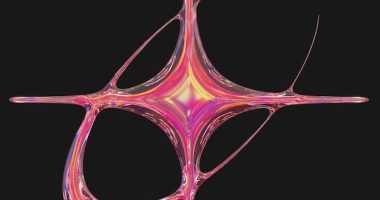In groundbreaking research detailed in their latest publication, a group of researchers led by Christian Kapper have assessed the efficacy of a vendor-agnostic deep learning denoising (DLD) algorithm in enhancing the quality of brain computed tomography (CT) scans across different machines. This multi-scanner study, recently published in “Fortschr Röntgenstr,” scrutinizes non-contrast cranial CT (ncCT) images from 150 patients who underwent routine scans after experiencing minor head trauma. Each patient’s images were processed using both the traditional filtered back projection (FBP) and a modern, vendor-neutral DLD method.
The study aimed to assess various diagnostic parameters including overall image quality, image noise, differentiation between brain tissues, artifact presence, image sharpness, and diagnostic confidence. Impressively, the results consistently favored the DLD approach. Statistically significant improvements were noted in noise reduction, signal-to-noise ratio (SNR), and contrast-to-noise ratio (CNR), alongside reduced artifacts, particularly in the challenging posterior fossa region.
These findings are crucial as they demonstrate the potential of DLD technology to universally improve diagnostic imaging quality, regardless of the CT scanner manufacturer. Such advancements could be particularly beneficial for older scanner models, improving diagnostic accuracy and patient outcomes across healthcare facilities. The study marks a significant step forward in the application of advanced artificial intelligence techniques in medical imaging, paving the way for broader implementation.
The pursuit of improving diagnostic imaging quality through advanced technology like deep learning denoising (DLD) is not just a matter of technological curiosity but a substantive clinical need. Computed Tomography (CT) scans are pivotal in the landscape of diagnostic imaging, serving crucial roles in areas ranging from emergency medicine to oncology. The challenge often encountered, especially with non-contrast cranial CT (ncCT) scans, is maintaining image clarity while managing exposure to ionizing radiation and varying capabilities of different CT scanner models.
In this context, the efforts led by Christian Kapper and his team are noteworthy. The core of their research lies in overcoming the machine-dependent variability of CT scans by leveraging a vendor-neutral DLD algorithm. Historically, the performance of CT imaging algorithms has been tightly coupled with specific hardware from certain manufacturers, constraining the universal improvement of image quality.
Existing imaging techniques such as filtered back projection (FBP) have been the standard, yet they have notable limitations particularly in terms of the noise and artifacts they introduce into the images, which can obscure diagnostic details. Recent advancements in artificial intelligence (AI) have proposed various solutions, but the real challenge has been in developing a solution that performs consistently well across technologies from different vendors.
Deep Learning Denoising represents a significant leap in this direction. DLD uses sophisticated algorithms trained on vast datasets of images to effectively ‘learn’ how to identify and reduce noise while enhancing the overall image quality. This process not merely adjusts the image but actively refines it, drawing on learned patterns across thousands of examples.
The study spearheaded by Kapper is set against this backdrop of need and innovation. By systematically evaluating the DLD’s effectiveness across different scanners and settings, the research tackles an industry-wide issue: the variability in diagnostic imaging quality due to differences in scanner models and technology levels. This issue is particularly pronounced in facilities that cannot afford the latest equipment, potentially compromising patient care quality.
The clinical implications of these findings are extensive. Improved image quality directly translates to better diagnostic accuracy, particularly in detecting subtle abnormalities in cases of minor head trauma. Furthermore, by reducing the need for repeat scans due to poor image quality, DLD can help decrease patient exposure to additional radiation and streamline clinical workflows in busy medical settings.
Moreover, the adoption of a vendor-neutral technology like DLD enhances the democratization of quality in medical imaging. Facilities with older or less sophisticated equipment can benefit nearly as much as those equipped with the latest technology, leveling the playing field in terms of diagnostic capabilities.
Thus, the study not only provides significant insight into the practical applications of AI in medical imaging but also marks a crucial step towards more equitable healthcare practices, where the quality of diagnostic tools and outcomes is universally elevated, irrespective of the underlying hardware used.
In this pivotal study, led by Christian Kapper, the methodology adopted was meticulous and aimed to provide a robust evaluation of the vendor-neutral deep learning denoising (DLD) algorithm. The study’s backbone consisted of a comparative analysis between traditional filtered back projection (FBP) and DLD across ncCT scans from multiple CT scanners, ensuring a comprehensive assessment of the algorithm’s performance.
**Patient Selection and Data Collection:**
The research encompassed non-contrast cranial CT scans from 150 patients, each presenting with minor head trauma. These patients were retrospectively selected from several institutions, ensuring a diverse pool of images obtained from a broad spectrum of scanner models and manufacturers. This approach helped mitigate biases towards any specific brand or model’s imaging technology.
**Imaging Protocol:**
For each patient, the standard imaging protocol involved acquiring ncCT scans using different scanners under routine clinical settings. The initial images were processed using the standard FBP technique. Subsequently, the same raw imaging data were processed using the DLD algorithm. This dual-processing approach facilitated a direct comparison between the traditional imaging method and the advanced DLD technology.
**Deep Learning Denoising Algorithm:**
The heart of the study, the DLD algorithm, operated independently of CT scanner vendors. It was developed to improve image quality by reducing noise and enhancing signal-to-noise and contrast-to-noise ratios. The algorithm was trained on a vast dataset of CT images, enabling it to learn variabilities in noise patterns and optimize the denoising process across different devices.
**Evaluation Metrics:**
A panel of experienced radiologists conducted a blinded evaluation of the image sets—comprising both FBP and DLD processed images—with no prior knowledge of the patients’ details or the type of processing used. The assessment criteria focused on overall image quality, noise levels, clarity of tissue differentiation, presence of artifacts, image sharpness, and diagnostic confidence. To ensure consistency, each parameter was rated using a standardized scale.
**Statistical Analysis:**
Statistical analysis played a crucial role in the study. Data collected from the evaluations underwent rigorous statistical testing to identify significant differences between the FBP and DLD processed images. Improvements in image quality metrics such as SNR and CNR were quantified, and the presence of artifacts, especially in challenging regions like the posterior fossa, was closely examined.
**Inter-Scanner Variability:**
An integral part of the study was analyzing the performance of the DLD algorithm across various scanner models. This was critical to determining the algorithm’s effectiveness in reducing the variability traditionally seen with different CT equipment.
Through this detailed and structured methodology, the study not only highlighted the enhanced performance of DLD in improving diagnostic imaging quality but also underscored its potential to be implemented universally, across various CT scanner models, thereby democratizing the quality of diagnostic imaging on a larger scale.
**Key Findings and Results:**
The comprehensive study led by Christian Kapper established transformative results that clearly define the benefits of implementing deep learning denoising (DLD) techniques in the processing of non-contrast cranial CT (ncCT) scans. Central findings reveal substantial enhancements across multiple diagnostic parameters, confirming that DLD technology could potentially revolutionize the standard of care in medical imaging.
**Improved Image Quality and Noise Reduction:**
One of the most pivotal outcomes of the investigation was the marked improvement in overall image quality and significant noise reduction when using the DLD algorithm compared to the traditional filtered back projection (FBP) technique. Images processed with DLD exhibited reduced graininess and a clearer visualization of brain tissue, which is paramount in accurately identifying subtle pathological changes, especially in cases of minor head trauma.
**Enhanced Signal-to-Noise and Contrast-to-Noise Ratios:**
Quantitative assessments showed that the signal-to-noise ratio (SNR) and contrast-to-noise ratio (CNR) were significantly higher in images processed with the DLD algorithm. This implies that DLD not only makes the images clearer but also enhances the distinct visibility of different tissues, increasing the diagnostic efficacy and potentially reducing the misinterpretation or oversight of critical findings.
**Reduction in Artifacts:**
Another crucial advancement noted in the DLD processed images was the reduced presence of artifacts, particularly in the complex posterior fossa area. Artifacts can often obscure or mimic pathologies, leading to diagnostic errors. The reduction of such distortions thus contributes immensely to the reliability and accuracy of CT scan interpretations.
**Diagnostic Confidence:**
There was a unanimous agreement among the radiologists in the study that their diagnostic confidence improved when evaluating the DLD-processed images. This is a reflective outcome of enhanced image quality, decreased noise, and reduced artifacts.
**Universal Applicability Across Different Scanners:**
The study importantly verified that the improvements offered by the DLD algorithm were consistent across various CT scanner models and brands. This finding is crucial as it highlights the vendor-agnostic nature of the DLD technology, ensuring that its benefits can be universally applied, thus democratizing the quality of medical imaging regardless of the equipment’s make, model, or age.
**Clinical Implications and Future Directions:**
The study not only underscores the capability of DLD to enhance the quality of diagnostic imaging but also opens up avenues for its broader implementation in medical settings. By proving that the technology can standardize high-quality imaging across different devices, there is potential for significant impact in clinical practice, particularly in enhancing the accuracy of diagnoses and reducing the need for repeat scans.
**Robust Statistical Validation:**
Statistical analysis underpinning these results adds a layer of reliability to the findings. By utilizing rigorous statistical methods to validate the improvements in image quality metrics, the study provides a solid foundation for recommending the integration of DLD technology in routine clinical practice.
In conclusion, the research spearheaded by Christian Kapper provides compelling evidence of the substantial benefits of implementing deep learning denoising in the processing of cranial CT images. The study’s findings advocate for a shift in how medical imaging is approached, suggesting a move towards integrating advanced AI technologies to ensure higher diagnostic accuracy, enhanced patient safety, and better overall healthcare outcomes. As this technology continues to evolve, it may soon become the new standard, paving the way for further innovations in the field of diagnostic imaging.
**Future Directions and Final Thoughts**
The impressive results garnered from the study led by Christian Kapper have set the stage for numerous possibilities and future directions in the integration of AI technologies, specifically deep learning denoising (DLD), within the realm of medical imaging. As the evidence supports the deployment of DLD to enhance the quality and reliability of CT scans across various machine types, there are several avenues that can be explored to build on this foundation.
Firstly, future research could aim to expand the application of DLD techniques beyond cranial CT scans to other anatomical areas and different types of diagnostic imaging modalities such as Magnetic Resonance Imaging (MRI) and Positron Emission Tomography (PET) scans. The heterogeneity in image acquisition parameters across these modalities presents unique challenges where advanced denoising algorithms could significantly improve image quality and diagnostic accuracy.
Another direction is to refine and optimize the DLD algorithms further through the incorporation of newer AI frameworks and learning models, such as generative adversarial networks (GANs). These could potentially enhance the algorithm’s ability to recreate anatomical details more accurately while suppressing noise. Alongside technical advancements, inclusivity in training datasets to encompass a broader range of demographic and clinical variables would improve the algorithm’s generalizability and performance across globally diverse populations.
Integration of DLD technology into real-time imaging could dramatically change the landscape of interventional radiology, where rapid and accurate image interpretation is crucial. Implementing DLD in real-time procedures could help reduce the risks associated with interventions by providing clearer images for precise navigation and decision-making.
Furthermore, as cybersecurity remains a paramount concern with the increasing use of digital technologies in healthcare, ensuring the security of AI systems like DLD from potential cyber threats is crucial. Research into secure AI application practices becomes essential as these technologies become integral to clinical imaging processes.
Lastly, a vital area of exploration is the impact of DLD technology on healthcare economics. By potentially reducing the number of repeat scans and enhancing diagnostic accuracy, DLD can contribute to significant cost savings for healthcare facilities. Analyzing these economic impacts comprehensively will provide a more holistic view of the benefits of implementing such AI technologies in the medical field.
In conclusion, the study by Christian Kapper has not only shown that vendor-neutral DLD can universally enhance the quality of CT imaging but also catalyzed a shift toward more innovative and equitable healthcare practices. As we look forward, it is essential for the medical community to continue exploring, refining, and implementing AI technologies. Doing so promises not only to elevate the standards of diagnostic accuracy and patient care but also to transform the landscape of medical diagnostics into a realm characterized by greater efficiency, equality, and advanced technological integration. The journey of DLD in medical imaging is just beginning, and its future pathways are as promising as they are essential to exploring.









